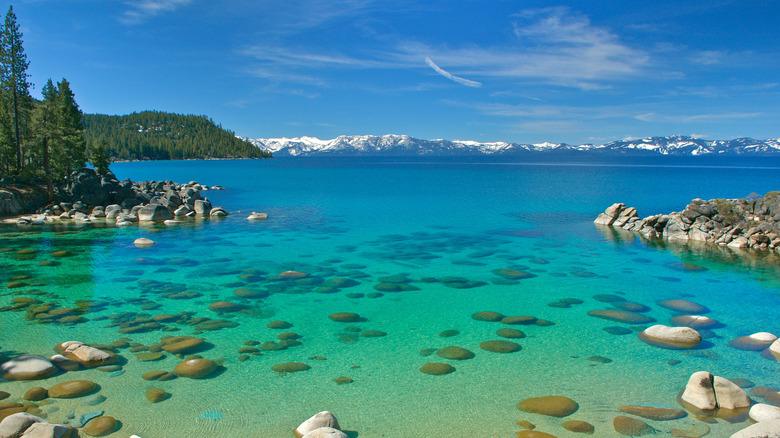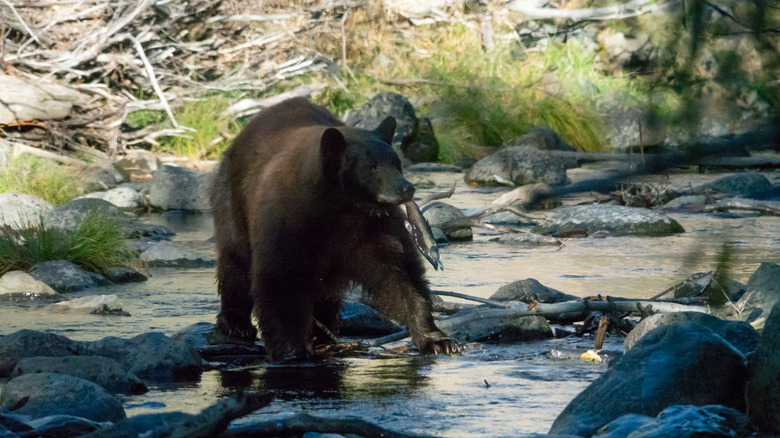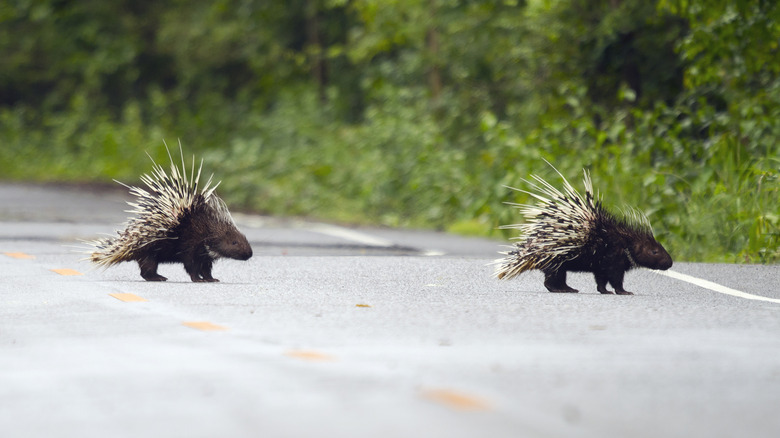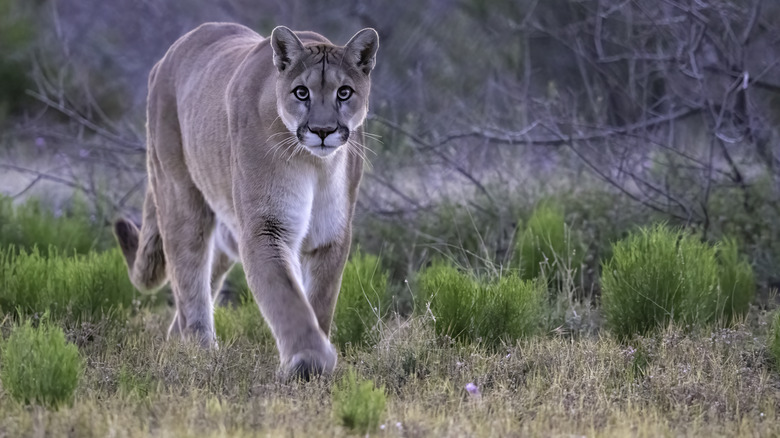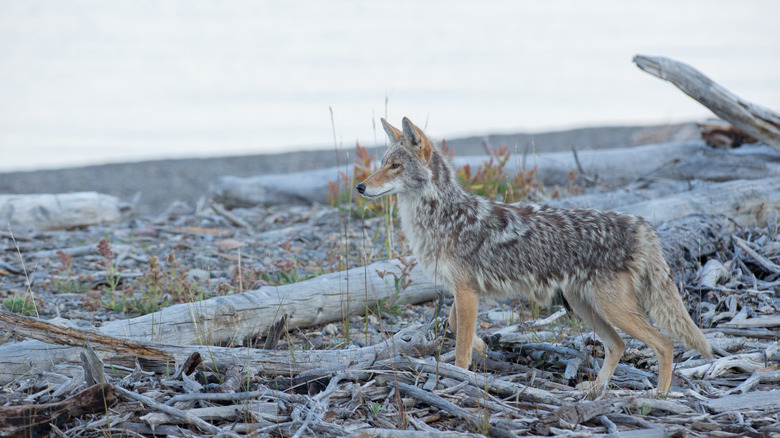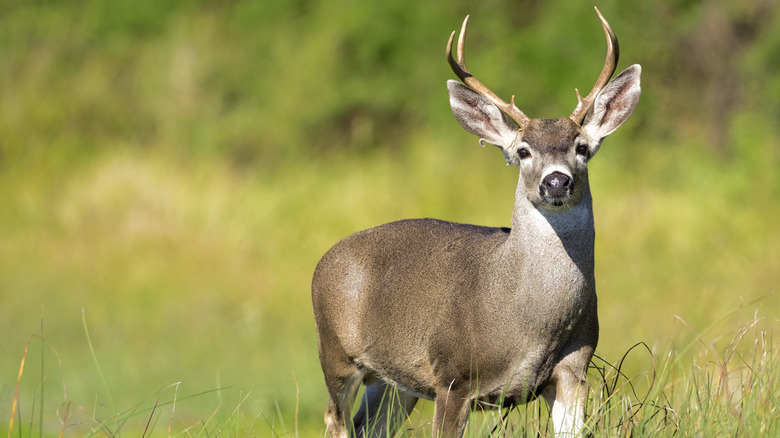Creatures To Beware Of When Adventuring In And Around Lake Tahoe
As North America's largest alpine lake with crystal clear water and a shoreline of 75 miles, it's no wonder that Lake Tahoe is lovingly referred to as the "Jewel of the Sierra." This gorgeous body of water is a popular destination for thrill-seekers and nature lovers because there is always something to do in and around the lake during any season. You can hike or mountain bike around the Lake Tahoe Basin in fall, go fishing and boating on the lake in summer, or ski and snowshoe in winter or spring. If you are lucky, you may also be able to snag a campsite at Nevada Beach, one of the hardest to book campgrounds in America.
However, if you plan to spend time outdoors at Lake Tahoe, then you should also know that, despite being a popular vacation destination, the area around Lake Tahoe is still quite wild and is full of a variety of animals. This is great because it means you may have the chance to spot some unique wildlife during your visit to the lake — like the shy American marten or rare Douglas squirrel. However, this also means that there are some animals living around Lake Tahoe that you should beware of because they can be dangerous. So, let's discuss these critters and what to do if you see one so that you can stay safe during your time adventuring at the Jewel of the Sierra.
Many black bears call Lake Tahoe home
As Lake Tahoe is located on the border of Nevada and California — the latter of which just so happens to be one of the states with the highest number of black bears in the country — it probably comes as no surprise that the area around this alpine lake has bears. However, what you might not know is just how many black bears live at Lake Tahoe. The wilderness surrounding this crystal-clear lake is actually home to one of the highest density of black bears in the country. Furthermore, the bear population at Lake Tahoe has spiked in recent years as more bears were drawn to the lake by the large amounts of food and trash left behind by tourists. Because the black bears at Lake Tahoe have learned that humans have food, they have become braver than the bears in other areas of the country. This means that extra precautions should be taken when visiting or staying near Lake Tahoe for your own safety and the safety of the animals themselves.
If you see a bear while walking around outside, it is important to pick up any small children and pets and slowly back away. You can also try making noise and waving your arms while doing this to try and scare the bear off. If a bear is stressed or aggressive, it may start pacing back and forth and may even bluff charge (run or bound towards you but stop short). However, even if this happens, you should never run from a bear. Instead, stand your ground and try to look as large as possible. You can do this by putting your arms above your head and unzipping any jacket or coat you are wearing. Although rare, if you experience a black bear attack, the best thing to do is fight back.
Keep your pets safe around porcupines
Another animal to keep an eye out for during your outdoor adventures at Lake Tahoe, especially if you have pets, is the porcupine. While porcupines are a rare sight because they are usually most active at night and like to spend their time in trees, they are also armed with around 30,000 quills with barbed ends that can easily get stuck inside a curious pet or child. While it is a myth that porcupines shoot their quills at a target, what they can do is cause their quills to stand up when threatened so that they easily detach and latch onto anything that touches them. Because the quills latch when they are touched, even a dead or injured porcupine can quill you — so it is important to keep your distance from these animals no matter the situation.
If you, a pet, or a loved one ever does end up getting quilled, it is important to seek medical attention immediately. Porcupine quills are barbed in a way that makes them difficult to pull out. On top of this, the longer the quills are in your skin the more likely they are to soften and break which can lead to infection or the migration of the quill to another area of your body where it can do more damage.
Mountain lions are a rare sight, so be aware of warning signs
Mountain lions also live in the Sierra Nevada area and are one of this arid mountain range's most successful predators. While mountain lions are quite shy and are a pretty rare sight around Lake Tahoe, they are still there. Because of this, it is important to be aware of them especially if you plan on spending time out in the woods. When hiking or camping in their territory, the first thing you should know is how to recognize the warning signs that a mountain lion is nearby.
If you ever encounter a mountain lion while hiking, camping, or skiing around Lake Tahoe, remember that the mountain lion likely doesn't want anything to do with you. So, the best course of action is to slowly back away while making loud noises. Just like with black bears, you should never run from a mountain lion in case you trigger their instinct to chase you. One of your biggest advantages during a mountain lion encounter is that you stand on two feet, which many scientists believe prevents the big cats from seeing humans as prey. Because of this, when confronting a mountain lion, you should never bend down or crouch as it will make you appear more prey-like. Although mountain lion attacks are extremely rare, if it ever happens to you, you should fight back (just like you would with a black bear).
Seeing a coyote can be quite common
Unlike porcupines and mountain lions, coyotes are more of a common sight in the Lake Tahoe area and they can often be seen trotting across roads, wandering around ski resort parking lots, and even exploring neighborhoods during the day. Coyotes being active and in human-inhabited areas during the day is a sign that they are used to humans and may be more likely to become aggressive. Because of this, it is a good idea to know what to do if you ever run into a coyote in the Lake Tahoe area.
If a coyote simply crosses the path in front of you and keeps moving, then there usually isn't any reason for alarm. However, if a coyote starts approaching or following you, then you will need to take action. First, just like other predators, it is important not to run away from a coyote. Instead, you should stand your ground and face the coyote while waving your arms and shouting. Many experts also recommend "hazing" coyotes by throwing sticks, rocks, or other items at them if they won't leave you alone. While this may seem cruel, it can help them become more fearful of humans and encourage them to stay clear of residential areas. If you will be camping during your time at Lake Tahoe, it may also be useful to learn how to keep coyotes away from your campsite so you can deter any potential run-ins.
Don't get close to a mule deer
Mule deer are a common sight around Lake Tahoe in the summer months when they migrate up to the alpine lake to graze in meadows. While these animals may look docile and gentle, they are still wild and can be dangerous. This is especially true because deer can easily panic when startled which may lead them to run into objects or even break windows trying to escape a perceived predator. Furthermore, during the fall mating season, male deer can become aggressive and may even kick out at passing people and pets. Does may also become suddenly aggressive and stand their ground in springtime if they have a fawn nearby.
Because of this, if you are approached by a mule deer, the best thing to do is back away slowly and give the animal plenty of space. You should also make sure never to corner the deer. If the deer is acting aggressively, try moving to place a large object between you and the deer so that you are protected from any possible kicks or charges.
